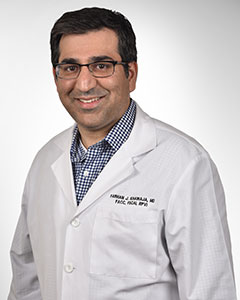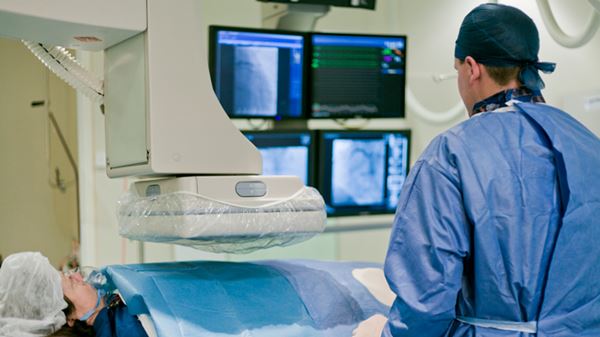New Treatment Offers Hope for Patients with Peripheral Arterial Disease
Peripheral arterial disease (PAD) is a condition that restricts blood flow to a person’s limbs, most commonly the legs. Caused by a buildup of fatty plaque in the arteries, PAD affects between 8 to 12 million Americans.
People who have PAD may experience buttock, thigh or calf burning, tingling, cramping, or heaviness when walking that goes away with rest. In more severe forms of PAD, the leg hurts even at rest or there is a loss of tissue such as gangrene or non-healing ulcers because of a lack of blood supply.
Diabetes and smoking are the two most common risk factors for PAD. In fact, about 30 percent of adults of adults over 50 with diabetes and/or a history of smoking have PAD.
PAD is a very serious condition, and in recent years we’ve made advancements in treatment that have increased survival rates and improved quality of life for patients.
Advances in Treatment for Peripheral Arterial Disease
Since PAD causes blockages all over the body, people with this disease have an increased risk of heart attacks and strokes. That’s why we often pursue a treatment course that is similar to what we prescribe for heart patients, such as taking aspirin and a cholesterol medication (usual called a statin), emphasizing smoking cessation, and treating other risk factors like high blood pressure and diabetes.Historically, bypass surgery has been the most common treatment option for people with PAD. However, these surgeries are very intensive, have a high risk of complications, and require prolonged hospital stays.
During the last ten years, we’ve begun to rapidly move away from bypass surgery in favor of more minimally invasive treatment options such as endovascular therapies. These therapies include the use of balloon angioplasty, stents, and atherectomy (removing the plaque from the arteries). Compared to bypass surgery, endovascular therapies are safer, typically require only a same-day outpatient procedure or overnight hospital stay, and have far fewer complications. They also don’t require general anesthesia or incisions that are disfiguring and may increase your risk of infection.
The Future of PAD Treatment: Drug-Coated Balloons
Drug-coated balloons (DCBs) are one of the most promising endovascular therapies today. DCBs are designed to open up the artery with a balloon and leave a drug on the surface of the vessel, which stops plaque from growing back and obstructing the artery again.
This device is poised to revolutionize the way we treat PAD because it is the best technology to date that has been proven to keep the artery open for an extended time without the use of a stent.
Endovascular therapies like DCBs could further reduce the use of surgical bypass to treat PAD. These therapies are more easily tolerated by patients, which is important because people with PAD are usually very sick and have a lot of other health problems.
Bypass No Longer the Only Option
If you are diagnosed with PAD and surgical bypass is recommended as the initial treatment option, I would strongly recommend asking if an endovascular approach is feasible first. People with PAD sometimes are told that nothing more can be done or that amputation may be the best option for dealing with the disease. However, new treatment options have shown great promise, so you should seek a second opinion about your care before making a decision of this magnitude.
The treatment of PAD is unique because several specialties have expertise in treating this condition. Many highly skilled doctors perform endovascular procedures, including interventional cardiologists, interventional radiologists, and vascular surgeons.
If your doctor recommends an endovascular procedure, find out where it is going to be performed. Many times these procedures are performed in physician’s private offices, which have been a recent focus of potential fraud and abuse. Most outpatient centers are excellent and reputable facilities, but if you feel that you are being pressured into a procedure or otherwise feel uncomfortable where it will be performed, insist that it be done in a hospital. At the Orlando Health Heart & Vascular Institute, all of our interventional cardiologists perform endovascular treatments for PAD in a state-of-the-art hospital facility.
If you’ve experienced any of the symptoms I’ve mentioned, please visit a doctor right away to get evaluated for PAD. This disease can affect the quality and quantity of life for those who have it. But, promising new treatments have brightened the horizon for patients suffering from PAD.








